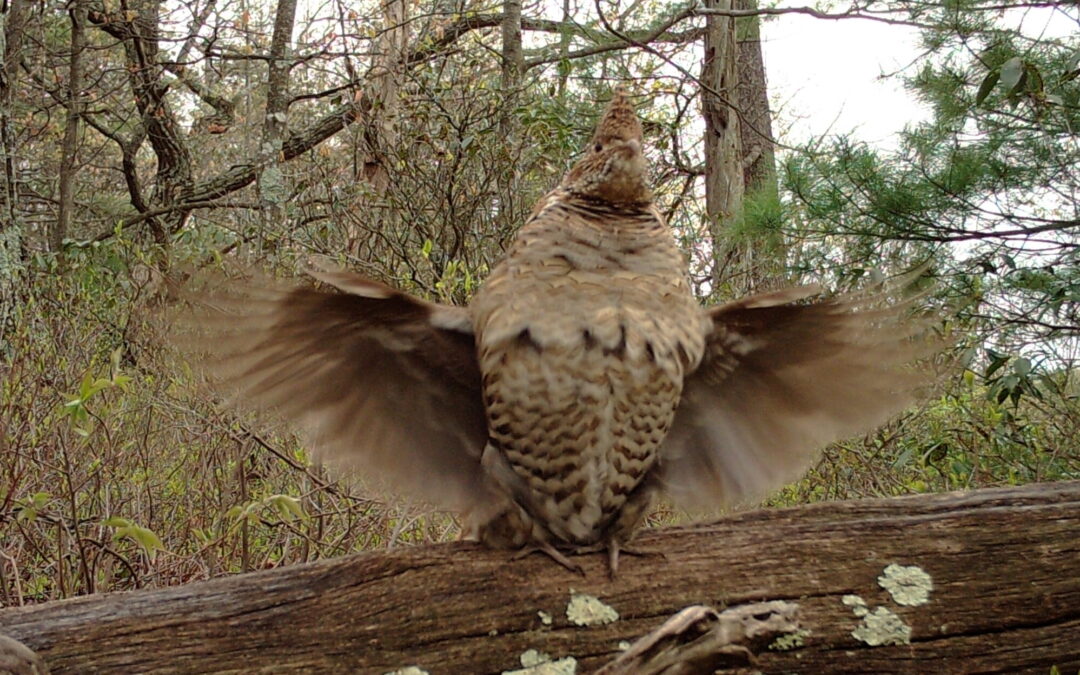Merrill Creek Reservoir (MCR) was once home to the Ruffed Grouse. However, over recent decades the Ruffed Grouse disappeared not only from MCR, but according to NJDFW, the Ruffed Grouse range has been shrinking dramatically in NJ (and in some areas of the State they have been extirpated). This decline, according to NJDFW, is due primarily to naturally occurring forest maturation coupled with other stressors that also impact habitat suitability and species health and life-cycle requirements. But all roads leading to the Grouse’s decline in NJ come back to the disappearance of suitable habitat.
Ruffed Grouse need young forest habitats (i.e. forests less than 20 years of age) to thrive. Additionally, according to the most recent NJ State Wildlife Action Plan there are 135 Species of Greatest Conservation Need in New Jersey (birds, reptiles, insects, mammals) and 39% of NJ listed threatened and endangered wildlife (not including marine animals) that also rely on young forest habitat for survival. Many of these 135 Species of Greatest Conservation need still occur at MCR, but are not as abundant as in previous decades.
According to NJDEP’s most recent Forest Inventory Analysis (FIA) data for NJ, New Jersey is at a place where less than 1 percent of the available forest habitat is the young successional forest habitat type, yet there is roughly 1.9 million acres of forest in NJ that continues to mature.
Based on forest inventory data collection at MCR, on average our forests at Merrill Creek are approximately 70-90 years

An example of a typical NJ even-age mature forest with no understory due to lack of sunlight from a closed canopy and over browsing by deer. Photo by John Parke
old (which is typical for the majority of NJ’s forests statewide as outlined in the NJDEP 2020 Forest Action Plan). However, to address the ecological stressors associated with even-age mature forests at MCR, MCR implements ecological forest stewardship practices under our State approved Forest Stewardship Plan (FSP).
As MCR is a private property, our FSP is not for public review, however for a list of what is required to be addressed and included in a NJ Forest Stewardship Plan by the State, please see this link. Please note that MCR has gone above and beyond the minimum FSP requirements in its research and data collection that is incorporated in our FSP by also conducting a site wide botanical survey by a third party, as well as conducting annual forest breeding bird surveys and annual deer density infrared drone surveys of the property.

An example of creating forest age-class and species composition diversity through active forest management via forest thinning (harvest) in NJ. Photo by John Parke
Based on the information outlined in the FSP, MCR has been moving forward to create a more varied age-class of forest that will help improve and diversify wildlife species habitat types, stimulate native vegetation regeneration to ensure the property’s forestland (including overall forest stand vigor), and improve forest resilience against climate related issues (including disease and exotic pests). In short, MCR’s plan calls for active forest conservation management, including forest thinning (harvest), invasive species controls, native plantings and other conservation practices that will: in the short -term increase young forest habitat, as well as in the long-run, help facilitate Old Growth forest characteristics in different parts of the property. By implementing active ecological forestry practices under State approved FSPs, pieces of NJ’s natural heritage, like the Ruffed Grouse, are hopefully not lost again.

